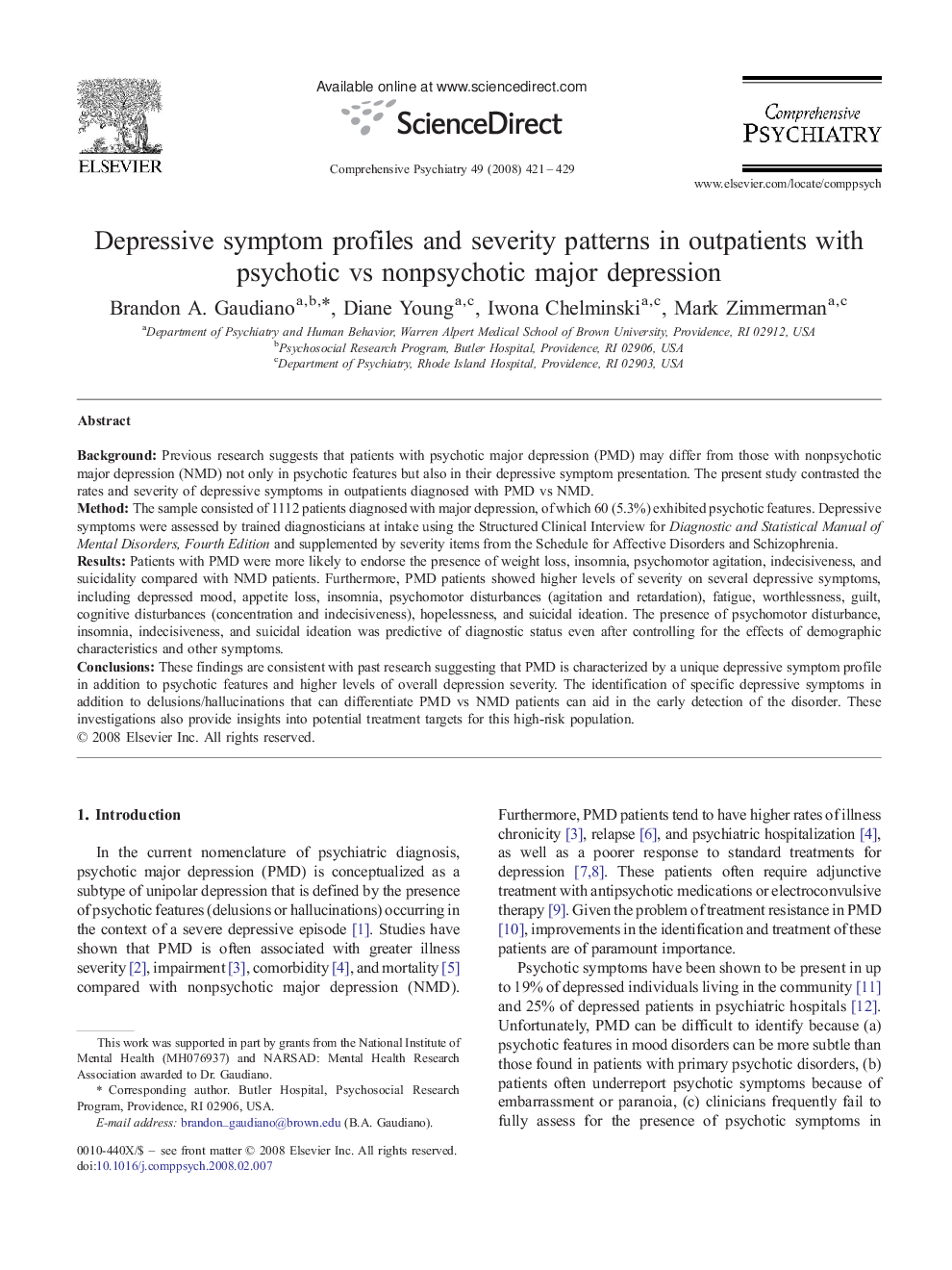| Article ID | Journal | Published Year | Pages | File Type |
|---|---|---|---|---|
| 318563 | Comprehensive Psychiatry | 2008 | 9 Pages |
BackgroundPrevious research suggests that patients with psychotic major depression (PMD) may differ from those with nonpsychotic major depression (NMD) not only in psychotic features but also in their depressive symptom presentation. The present study contrasted the rates and severity of depressive symptoms in outpatients diagnosed with PMD vs NMD.MethodThe sample consisted of 1112 patients diagnosed with major depression, of which 60 (5.3%) exhibited psychotic features. Depressive symptoms were assessed by trained diagnosticians at intake using the Structured Clinical Interview for Diagnostic and Statistical Manual of Mental Disorders, Fourth Edition and supplemented by severity items from the Schedule for Affective Disorders and Schizophrenia.ResultsPatients with PMD were more likely to endorse the presence of weight loss, insomnia, psychomotor agitation, indecisiveness, and suicidality compared with NMD patients. Furthermore, PMD patients showed higher levels of severity on several depressive symptoms, including depressed mood, appetite loss, insomnia, psychomotor disturbances (agitation and retardation), fatigue, worthlessness, guilt, cognitive disturbances (concentration and indecisiveness), hopelessness, and suicidal ideation. The presence of psychomotor disturbance, insomnia, indecisiveness, and suicidal ideation was predictive of diagnostic status even after controlling for the effects of demographic characteristics and other symptoms.ConclusionsThese findings are consistent with past research suggesting that PMD is characterized by a unique depressive symptom profile in addition to psychotic features and higher levels of overall depression severity. The identification of specific depressive symptoms in addition to delusions/hallucinations that can differentiate PMD vs NMD patients can aid in the early detection of the disorder. These investigations also provide insights into potential treatment targets for this high-risk population.
